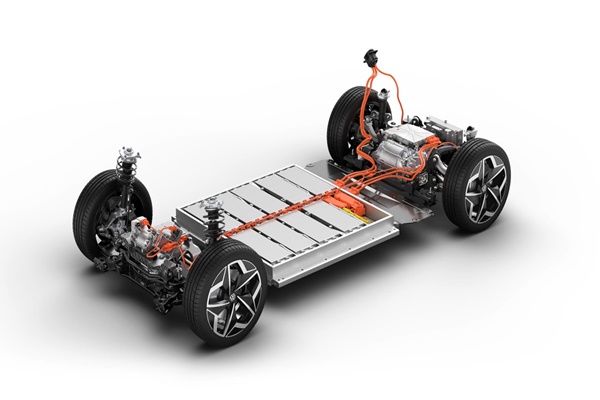Lithium-ion batteries are growing in popularity for many years now, majorly due to their beneficial applications across various industries, including electronic gadgets, telecommunication, aerospace, automotive, etc. Moreover, lithium-ion batteries have various advantages, such as a long-life cycle, offers high voltage, high storage, and high energy density. Recognizing the potential benefits of the technology, automotive manufacturers are making innovative strategic moves based on partnership, acquisition, etc., to amplify revenue generation. Here is the list of recent strategies unveiled by some automobile firms to facilitate the development of lithium-ion batteries.
The toyota-Panasonic joint venture, Prime Planet Energy & Solutions (PPES), signed an agreement with ioneer’s Nevada mine
Toyota-Panasonic's Prime Planet Energy & Solutions (PPES) and ioneer’s Nevada mine inked a battery joint venture in order to purchase lithium from ioneer’s Nevada mine for EVs. Moreover, this lithium will be used to manufacture electric vehicle batteries in the United States.
In accordance with the terms of the agreement, ioneer will provide 4,000 tonnes of lithium carbonate annually for five years (CATL). The supply is scheduled to begin in 2025.
Ola signed a PLI agreement with India's Heavy Industry Ministry
Ola signed a PLI agreement with Heavy Industry Ministry in order to develop EV batteries in India. The leading electric vehicle company inked a PLI agreement with the government of India in order to develop advanced cells in the country. According to the information, the firm aims to begin the mass production of these batteries in 2023.
Tesla inked a partnership agreement with Chinese suppliers:
One of the renowned EV giants, Tesla, inked two new long-term deals with the Chinese battery-materials suppliers, Zhejiang Huayou Cobalt Co. and CNGR Advanced Material Co., with the sole aim of securing the supplies for electric vehicle batteries. The rapidly intensifying competition among EV giants is forcing companies to innovate successful strategies.
The disclosures come at a time when significant automakers are snatching up battery metals in anticipation of a coming shortage.
From July 1, 2022, to the end of 2025, Huayou Cobalt will provide materials to Tesla. According to the miner, the costs of refining, as well as market pricing for nickel, cobalt, and manganese, will affect the prices of the products. From 2023 to 2025, CNGR will provide materials to the EV carmaker.
LG Energy Solution of South Korea is expected to supply batteries to Mahindra:
The first electric sports utility vehicle (SUV) from Mahindra & Mahindra is expected to use batteries offered by the LG Energy Solution. As per the information, the batteries will power the Indian automaker's XUV400 SUVs.
Ford announced its plan to import low-cost EV batteries from CATL:
Ford, according to its plans, is projected to import low-cost EV batteries from CATL, majorly for its North American EVs, which include SUVs and electric pickups.
This agreement is predicated on a larger partnership with CATL and a number of other agreements to buy battery materials over the next ten years.
The manufacturer plans to buy lithium-iron, or LFP, batteries from a new 40 GWh factory in North America beginning in 2026, according to Ford Vice President Lisa Drake. However, the vice president did not confirm whether CATL would construct the factory.
Ola Electric launched robust rechargeable batteries based on Lithium-ion-cell:
On July 12, 2022, Ola Electric showcased its in-house developed new NMC 2170 rechargeable batteries for their vehicles. By 2023, the electric vehicle manufacturer Gigafactory will begin full-scale production of lithium-ion batteries.
NMC is operated on the cathode side of the Ola Lithium-ion cell made locally, whereas silicon and graphite are used on the anode side. The cell was created with the specific needs of the Indian environment in mind. By utilizing particular chemistry and materials, Ola Electric's R&D division has effectively managed to compress more energy into a small space. Additionally, the cell's total life cycle will be enhanced by the new technologies used in it.
Conclusion
The demand for lithium-ion batteries is reaching its peak. As per the estimates by Astute Analytica, the global lithium-ion battery market is forecast to grow at a CAGR of 20.5% during the forecast period; 2022-2027. Recognizing the potential of the technology, various automotive giants are making efforts to use the opportunity for profit generation.












0 Comments